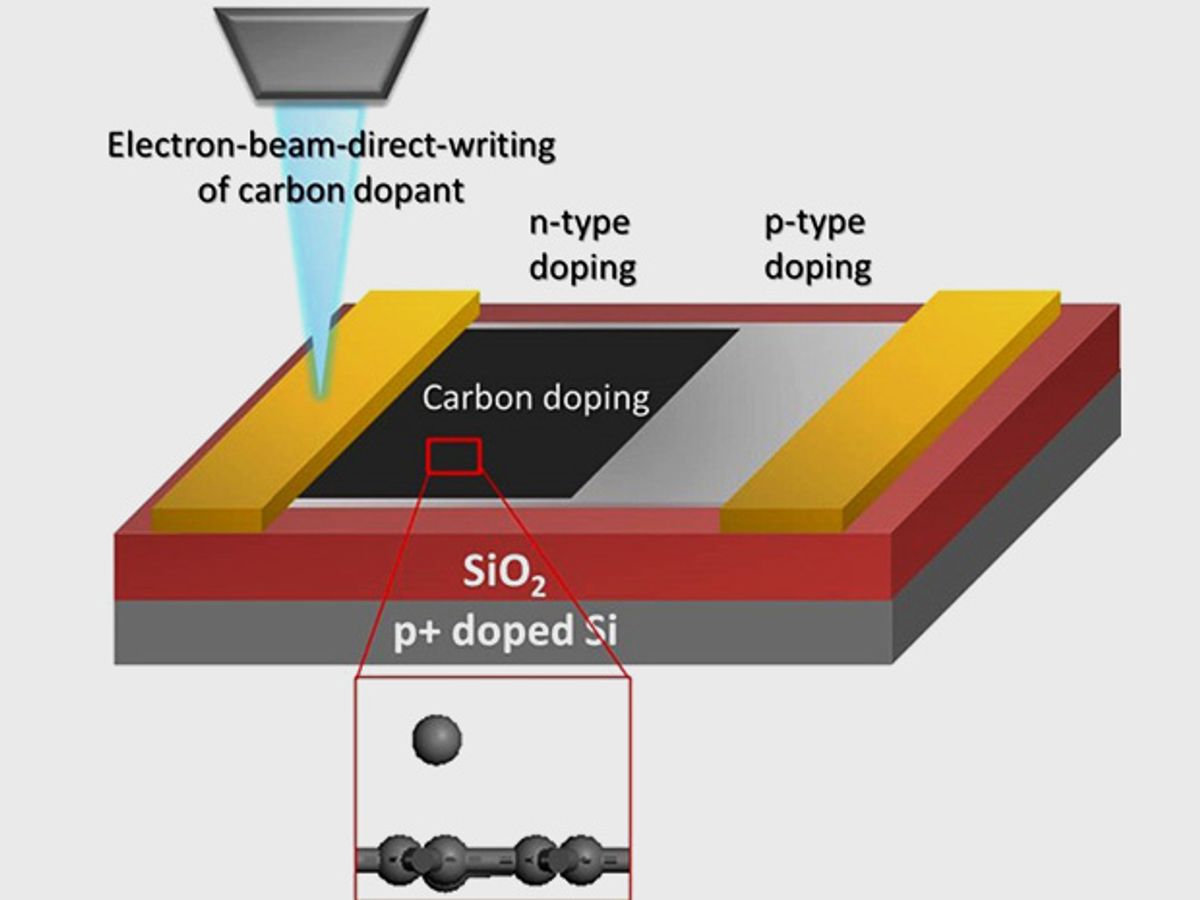Generally speaking, the issue that most electronic circuit research is aimed at is making them smaller yet still functional. It would seem that creating circuits that change over time, or even disappear entirely, is an endeavor that has been largely neglected, outside of a TV spy show from the 1960s that gets periodically rebooted into films.
Now researchers from the Georgia Institute of Technology have taken up the challenge of creating circuits than change over time, and may have come up with a technology that could have some attractive biomedical applications.
In research published in the journal Nanoscale, the Georgia Tech researchers deposited carbon atoms onto graphene using a focused electron beam process to create patterns that evolve over time on the graphene.
“We will now be able to draw electronic circuits that evolve over time,” said Andrei Fedorov, a professor at Georgia Tech, in a press release. “You could design a circuit that operates one way now, but after waiting a day for the carbon to diffuse over the graphene surface, you would no longer have an electronic device. Today the device would do one thing; tomorrow it would do something entirely different.”
Providing further evidence that intentionally setting out to create disappearing circuits is rare at best, the Georgia Tech researchers admit that they were initially just trying to see how they could remove hydrocarbon contaminants from graphene.
What they soon discovered was that when they deposited the carbon atoms on the graphene, they could create patterns and these patterns served to create negatively charged areas in the graphene.
But what really grabbed their attention was the discovery that these patterns would change over time as the carbon atoms moved around the surface of the graphene until they were spread uniformly across the entire surface. This change, which occurs over tens of hours, converts positively charged (p-doped) surface regions into surfaces with a uniformly negative charge (n-doped). It also manages to form an intermediate p-n junction domain during this transformation.
“The electronic structures continuously change over time,” Fedorov explained. “That gives you a reconfigurable device, especially since our carbon deposition is done not using bulk films, but rather an electron beam that is used to draw where you want a negatively-doped domain to exist.”
While the security applications for such a capability have been demonstrated vividly in the TV and movie series Mission: Impossible, the researchers have suggested that such a capability could prove useful in biomedicine.
“Perhaps there could be certain activated, triggered processes that could benefit from this type of behavior in which the electronic state changes continuously over time,” said Fedorov in the press release.
In further research, the Georgia Tech team will be aiming to find an application that could not be achievable without this capability.
Dexter Johnson is a contributing editor at IEEE Spectrum, with a focus on nanotechnology.



